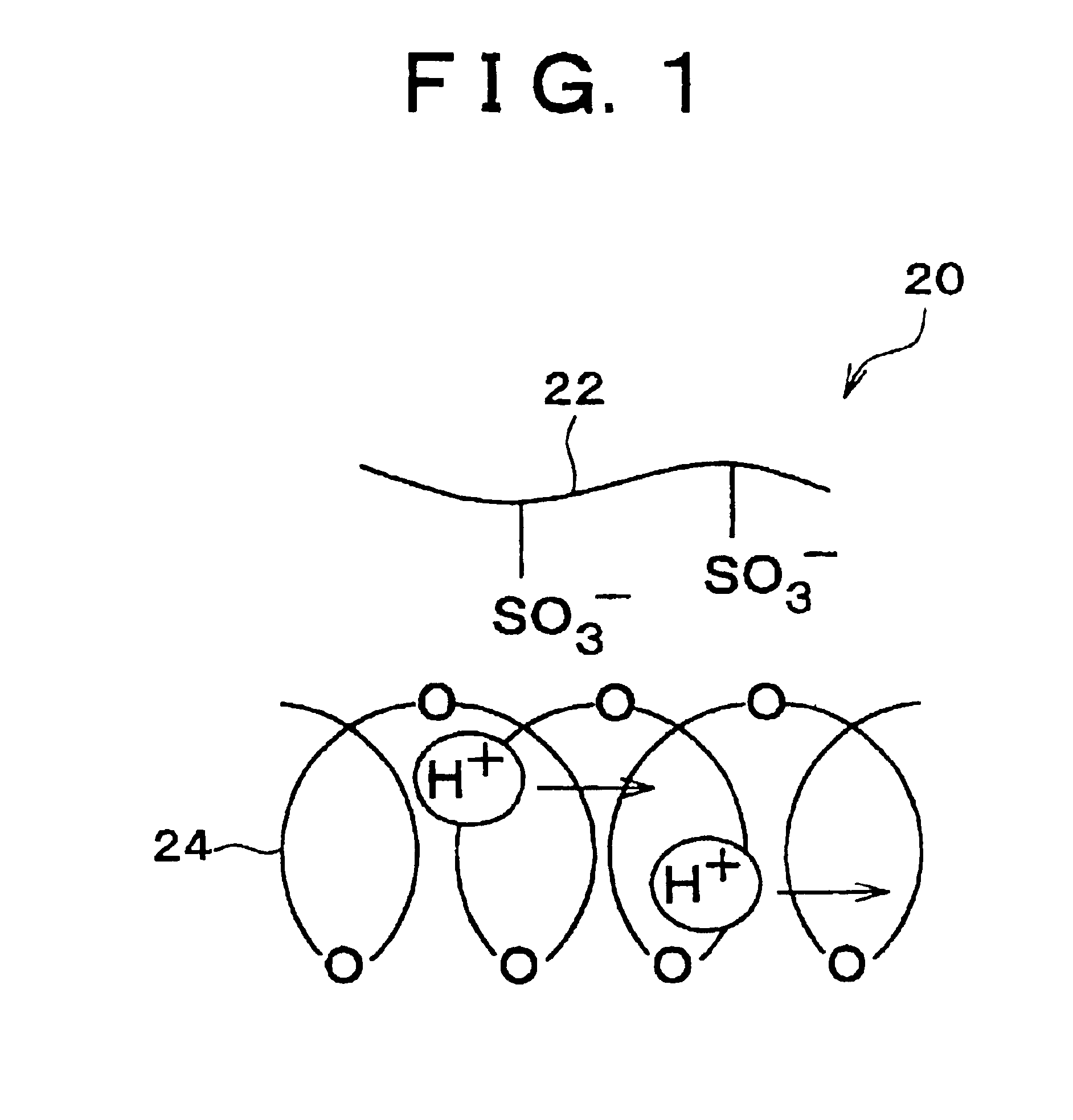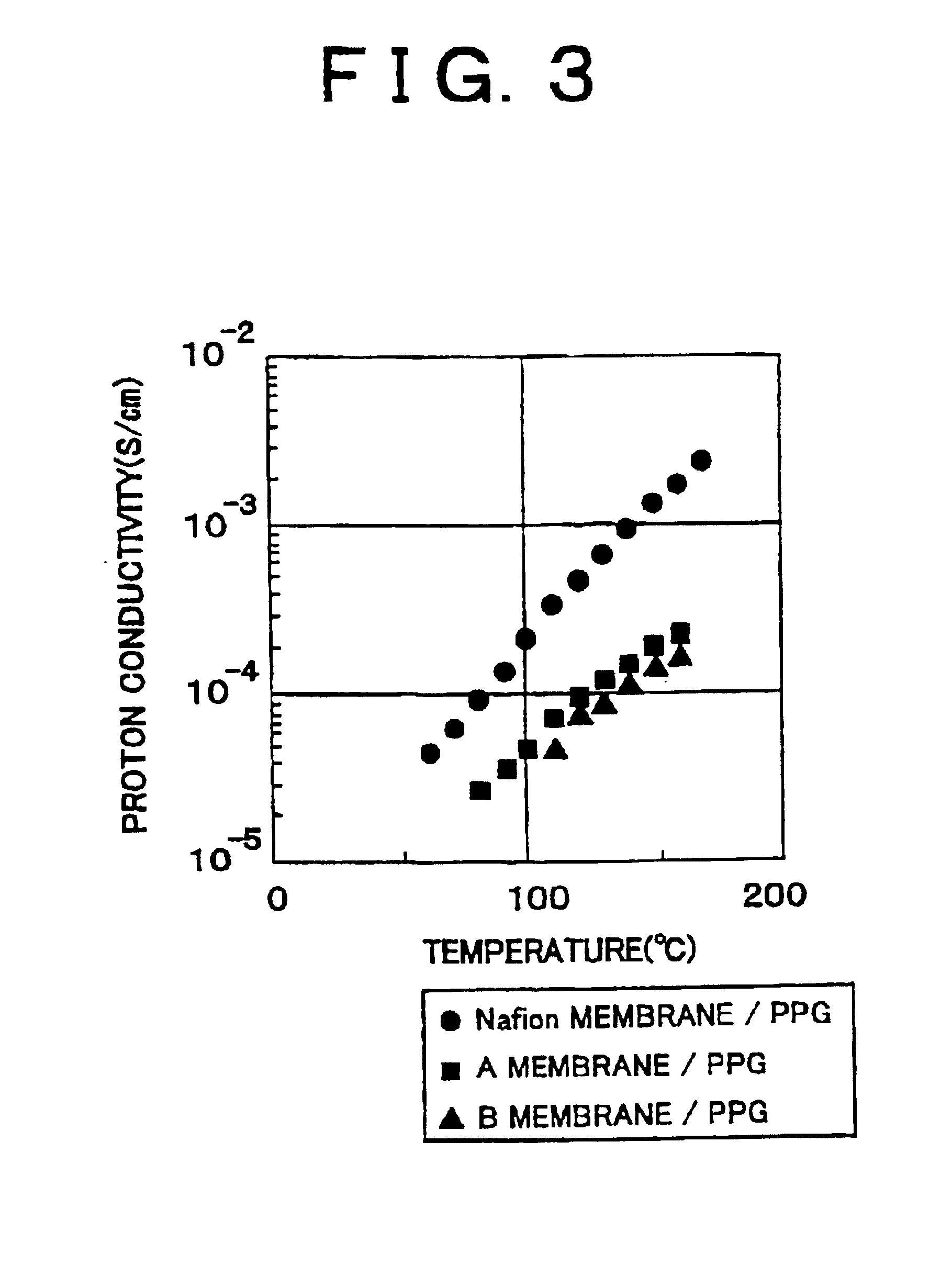Polymer electrolyte membrane and method of production thereof
a technology of polymer electrolyte and electrolyte, which is applied in the direction of non-aqueous electrolyte cells, sustainable manufacturing/processing, and final product manufacturing, etc., can solve the problems of lowering the proton conductivity and the inability to obtain favorable proton conductivity at a temperature exceeding the boiling point of water, and achieves favorable proton conductivity
- Summary
- Abstract
- Description
- Claims
- Application Information
AI Technical Summary
Benefits of technology
Problems solved by technology
Method used
Image
Examples
embodiment 1
[0044](1-1) A Polymer Electrolyte Membrane of an
[0045]The Polymer Electrolyte Membrane of the embodiment 1 is obtained by impregnating a Nafion membrane into polypropylene glycol, that is by immersing the Nafion membrane which is dried with hot air, into polypropylene glycol (PPG) having a molecular weight of 300 for four hours at 100° C.
embodiment 2
[0046](1-2) A Polymer Electrolyte Membrane of an
[0047]The Polymer Electrolyte Membrane of the embodiment 2 is obtained by impregnating a Nafion membrane into polyethylene imine, that is by immersing the Nafion membrane which is dried with hot air into polyethylene imine (PEI) having a molecular weight of 600 for four hours at 100° C.
embodiment 3
[0048](1-3) A Polymer Electrolyte Membrane of an
[0049]The Polymer Electrolyte Membrane of the embodiment 3 is obtained by impregnating a Nafion membrane into polyphosphoric acid, that is by immersing the Nafion membrane which is dried with hot air into polyphosphoric acid for four hours at 100° C.
[0050](2) A Polymer Electrolyte Membrane Obtained by Impregnating a Electrolyte Membrane, which has an Phase Separation Isolated-Phase Structure and can not be made in a Solution State, into a Liquid Base Polymer.
[0051]As the electrolyte membrane which has an phase separation structure and can not be made in a solution state, ethylene-tetrafluoroethylene-graft-polystyrene sulfonic acid membrane (ETFE-g-PSt-S membrane) is used. This membrane is obtained by immersing an ethylene-tetrafluoroethylene membrane (ETFE membrane) which is irradiated with a 20 kGy electron beam into a styrene monomer to allow them to react at 60° C. for four hours so that a graft membrane (ETFE-g-PSt membrane) having...
PUM
| Property | Measurement | Unit |
|---|---|---|
| Glass transition temperature | aaaaa | aaaaa |
| Temperature | aaaaa | aaaaa |
| Electrical conductivity | aaaaa | aaaaa |
Abstract
Description
Claims
Application Information
 Login to View More
Login to View More - R&D
- Intellectual Property
- Life Sciences
- Materials
- Tech Scout
- Unparalleled Data Quality
- Higher Quality Content
- 60% Fewer Hallucinations
Browse by: Latest US Patents, China's latest patents, Technical Efficacy Thesaurus, Application Domain, Technology Topic, Popular Technical Reports.
© 2025 PatSnap. All rights reserved.Legal|Privacy policy|Modern Slavery Act Transparency Statement|Sitemap|About US| Contact US: help@patsnap.com



